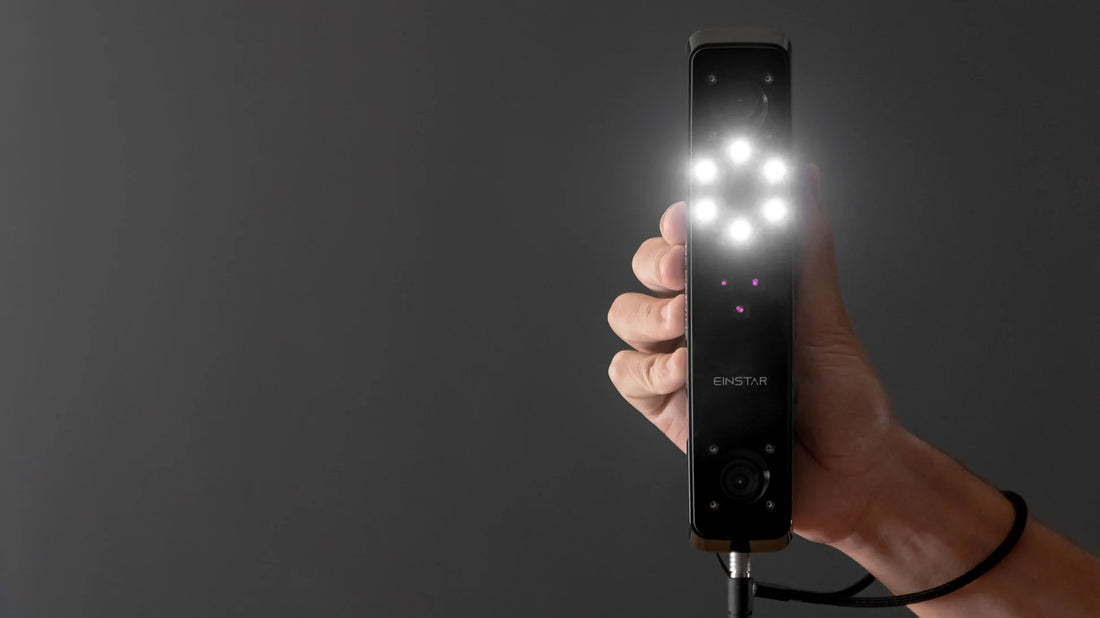
3D Scanning: The Future of Modeling
3D scanning has been around for quite some time now but has only recently gained popularity as a viable option for creating digital models. It is, without a doubt, the future of modeling. With the use of specialized hardware and sophisticated software, 3D scanning can capture precise details of objects or even entire environments, then convert them into high-quality digital models. In this blog post, we'll take a deeper dive into the world of 3D scanning, how it works, and its uses.
3D scanning is a process that involves capturing a physical object's geometry using technology. It is done by using specialized hardware that can take multiple pictures of the object from different angles. The photographs taken are then analyzed using software, which creates a high-quality digital model of the object. The process of creating a 3D model with a scanner can take minutes to hours, depending on the complexity of the object.
One of the obvious uses of 3D scanning is creating digital models of physical objects. Artists can use the technology to digitize sculptures, paintings, and other art pieces. Doctors are also finding the technology useful for creating 3D models of medical scans for surgical planning or as guides for 3D printing prosthetics. In the automotive industry, 3D scanning is used to create digital models of vehicles for designing and improving parts, as well as understanding how the parts work together in a whole system.
3D scanning is a non-invasive process that does not require physical contact with the object being scanned. It allows you to analyze the details and the surface structure of an object and to make accurate measurements. It is also cost-effective compared to traditional modeling methods, as one can produce multiple copies of the same object. 3D scanning allows for customization, it can be used to make alterations to objects within the models, and mass-producing the pieces without costing a fortune.
3D scanning has a few limitations; one being the quality of scans can differ, depending on the type of material used to make the object. Hence, glass or highly reflective objects can give inadequate scans. Shiny objects reflect lights, which can make them seem deformed in the 3D scanning process. Soft materials like foams or fabrics can move, hence leading to inaccurate results. 3D scanners are also expensive to purchase, hence lowering accessibility to the technology.
3D Scanning has revolutionized the way we make digital models. With the advanced hardware available in the 3D scanning, one can scan objects with precision, ease and speed. The technology has various applications in almost every field, from the medical, automotive, entertainment and art industries. Though still relatively new, the adoption rate of 3D scanning is promising. With advancements in hardware and software technology, 3D scanning looks set to become the go-to modeling solution of the future.
3D scanning is a process that involves capturing a physical object's geometry using technology. It is done by using specialized hardware that can take multiple pictures of the object from different angles. The photographs taken are then analyzed using software, which creates a high-quality digital model of the object. The process of creating a 3D model with a scanner can take minutes to hours, depending on the complexity of the object.
One of the obvious uses of 3D scanning is creating digital models of physical objects. Artists can use the technology to digitize sculptures, paintings, and other art pieces. Doctors are also finding the technology useful for creating 3D models of medical scans for surgical planning or as guides for 3D printing prosthetics. In the automotive industry, 3D scanning is used to create digital models of vehicles for designing and improving parts, as well as understanding how the parts work together in a whole system.
3D scanning is a non-invasive process that does not require physical contact with the object being scanned. It allows you to analyze the details and the surface structure of an object and to make accurate measurements. It is also cost-effective compared to traditional modeling methods, as one can produce multiple copies of the same object. 3D scanning allows for customization, it can be used to make alterations to objects within the models, and mass-producing the pieces without costing a fortune.
3D scanning has a few limitations; one being the quality of scans can differ, depending on the type of material used to make the object. Hence, glass or highly reflective objects can give inadequate scans. Shiny objects reflect lights, which can make them seem deformed in the 3D scanning process. Soft materials like foams or fabrics can move, hence leading to inaccurate results. 3D scanners are also expensive to purchase, hence lowering accessibility to the technology.
3D Scanning has revolutionized the way we make digital models. With the advanced hardware available in the 3D scanning, one can scan objects with precision, ease and speed. The technology has various applications in almost every field, from the medical, automotive, entertainment and art industries. Though still relatively new, the adoption rate of 3D scanning is promising. With advancements in hardware and software technology, 3D scanning looks set to become the go-to modeling solution of the future.
